Special Features...
n Q&A with Gensler Principal
n Managing Trees to Avoid Damage
n Commercial to Multifamily Conversion is Promising

Design & Operation of Office, Multifamily, Hospitality, Medical and Government Facilities Spring 2023 • $5 HEALTHIER AIR!
n Earthquake Upgrades Needed A Post-Pandemic California Workplace Requirement
Will San Francisco Make a Comeback?
Anyone who doubts San Francisco’s ability to revitalize its diminished downtown only needs to look at its amazing iconic skyline and ask: How did this happen?

It happened when companies and government agencies figured out over many years how to make it happen. It wasn’t done in a rational manner. It was messy and chaotic and brilliant, and countless mistakes were made and corrected. Two earthquakes played a role. But it got done, and it will again. Just a matter of time. And best-case scenario is that it will become more of a place to live than just work — like Manhattan.
Recently Mayor London Breed presented a blueprint for a new and improved downtown. Powerful political forces are arrayed in support of some of it — and opposed to it as well. If everything she proposed is adopted, then the city will get up and running fast. But city government and the many interest groups being what they are, that won’t happen easily. Lots and lots of deals will have to get made.
John Bryant, CEO of the Building Owners and Managers Association of San Francisco, told his members, “The challenges we face as an industry and a city are unprecedented, but working together we know we will overcome these obstacles as we help envision a new bright future for San Francisco. I’m encouraged and grateful to announce that Mayor Breed has just launched her Roadmap to Downtown San Francisco's Future.
“The proposal was created with guidance from BOMA and our business community partners and outlines strategies to provide incentives to spur an economic recovery. Specifically, the plan makes a concerted effort to attract businesses and let them grow in San Francisco and includes a two-year pause on a scheduled gross receipts tax increase on San Francisco’s retail businesses, hotels, manufacturing sectors and arts and entertainment sector. Mayor Breed is also proposing new tax incentives for three years for companies that come to San Francisco and lease office space.”
Gensler, the world’s largest architectural firm and headquartered in California, imagines a very broad view of San Francisco in a recent report: “It’s time to re-envision our downtown as a neighborhood that accommodates not just work but also has opportunities to live, play, and learn. The most successful urban neighborhoods have a unique character and offer various experiences where everything is available within 15 minutes by bike, foot, or public transit...We reimagine downtown as a vibrant neighborhood. Instead of an office-focused central business district, picture an experiential community that offers a healthy mix of offerings: office, schools, shopping, restaurants, and most importantly: housing for all. It’s a neighborhood that’s easy to navigate and diverse in its offerings, with a range of building types, ages, and affordability.”
— by Henry Eason,
Editor
TO EDITOR
Comments on articles? Suggestions? Contact henry@easoncom.com
California Buildings Team
Henry Eason, Editor henry@easoncom.com
Ellen Eason, Publisher & Associate Editor ellen@easoncom.com
Contributing Editors
Ken Cleaveland, Public Affairs Advocate
Bob Eaton, Roberts Hospitality
Jessica Handy, CodeGreen Solutions
Rich Lerner, Construction Consultant
Michael F. Malinowski, AIA, President, Applied Architecture Inc.
Katherine A. Mattes, Real Estate Consultant
Steven Ring, Fulcrum Real Estate Development Carlos Santamaria, CEES-Advisors
Advertising Information
Ellen Eason, ellen@easoncom.com 415.596.9466 www.cabuildingsnews.com
© Copyright 2023 Eason Communications LLC PO Box 225234 San Francisco, CA 94122-5234
Copyright © 2023 by Eason Communications LLC, publisher of California Buildings News. The publisher assumes no liability for opinions expressed in editorial contributions to the magazine or third-party quotations within articles. The publication is not responsible for claims in advertisements. Printed in the U.S.A.
Cover image credit: Getty Images.
Contents Healthier Workplace Air Could Attract More Office Visits 10 Gensler Chooses Historic SF HQ 16 Industry News 8 Award-Winning HVACR Products 13 Promising Conversions to Housing New California Projects Debut 22 26 Seismic Upgrades Needed 6
Focus on Product Innovations 28
Photo: Adobe Stock
ELEVATED DESIGN MODULAR AL




















NEW Metal Wall System


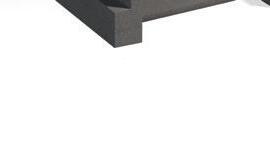








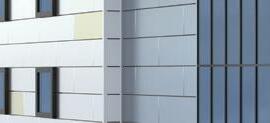

















This incredibly versatile metal cladding system will inspire you. Stretch your imagination to create unique sculptural façades using PAC-CLAD’s extensive PVDF color palette including brilliant metallics, warm wood grains and elegant ore finishes. Spell words, form logos, shapes or images with perforation. Explore the possibilities.







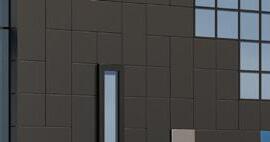






AR VIEW IN
1 3/8” to 3” Depths Running Bond Stacked Mosaic
PAC-C L AD.COM | 800 PAC CLAD
Imagine you discover the phone line to your elevator was inadvertently disconnected. What do you do? Call the phone company and ask them to come fix it, right? Seems obvious, but what do you do when the phone company tells you they cannot or will not come and reconnect those lines? Think that won’t happen? Think again.
We’ve had just such a circumstance recently happen to several of our California customers. The property managers, after inheriting the locations during a management company transition, realized the phone lines to their elevators had been disconnected. Understanding the code requirement to have those phones functioning properly, they called their phone company (to make what they thought was a simple request) to have those copper lines reconnected. Surprisingly (to them) they were informed their telephony provider would not provide them with an analog line. So, they called another company and even a few cable companies who all told them the same thing. Frustrated, these property managers turned to us for help.
Solutions for Disconnected Lines
Most often when this happens it’s not because the phone company is proactively going out and disconnecting lines, but circumstances (such as FCC Order 10-72a1) provide an opportunity for them to move away from what has been deemed an antiquated service. Aside from a management company change, storms which cause flooding and mudslides take out these lines. Once they are gone, phone companies have no interest in reestablishing them, because they’ve been told they don’t have to. No one is arguing there aren’t newer, better technologies, but it’s an inconvenience (to say the least) when the service you’ve come to rely on is now obsolete.
Many will attempt to rectify the situation with an internet-based product. Unfortunately, while VoIP is a nationwide communications trend suitable for many other
purposes, it exposes a building’s private network and relies on unreliable internet services that are at risk for failure during power outages or severe weather. In other words, it typically isn’t code-compliant, which means it isn’t really a solution for your elevator phones. Three key elevator code requirements to pay special attention to when finding a line replacement solution include:
w A 4-hour battery backup in case of a power outage
w A communication alert triggering a phone line verification alarm system
w Caller location identification without aid from the caller
Cellular Replacement Delivers Reliability
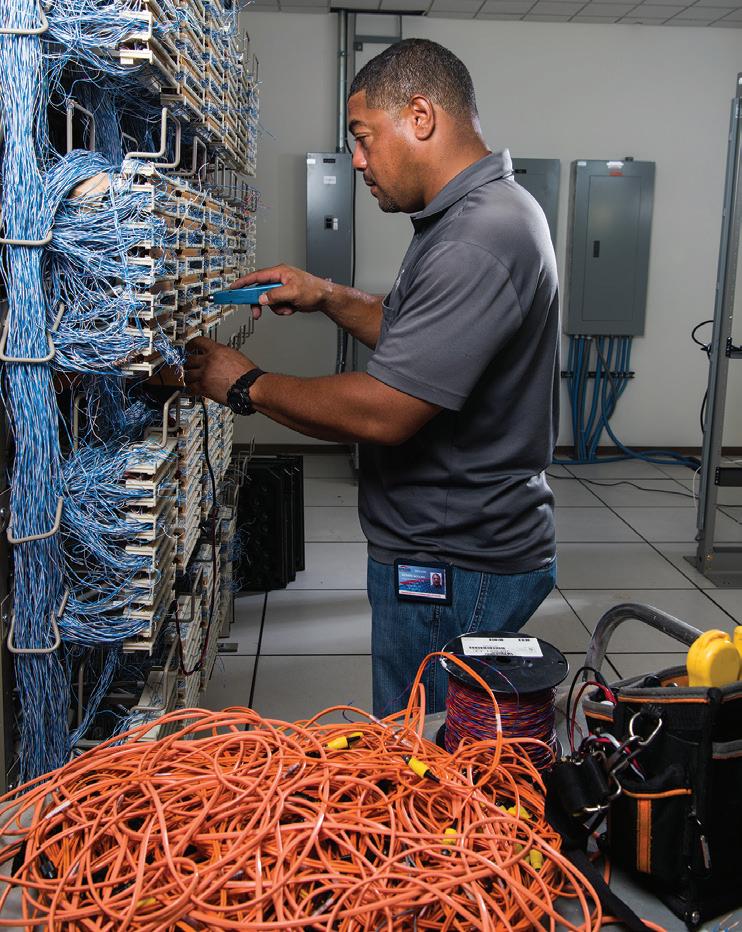
The good news is that cellular as a phone line replacement solution is code compliant and works in your elevator, and it completely eliminates the need for traditional analog/copper lines. Made specifically for the unique requirements that come with emergency communications, Kings III’s cellular solution is different from your cell phone, which is trying to receive a signal through the steel-lined shaft. This means you won’t have to worry about spotty coverage in the same way you would with a cell phone in the elevator. Even further, we are able to test and set the receiver for optimum reception.
The 4G LTE connectivity that Kings III’s cellular elevator phone solutions provide delivers stability and reliability, likely at a much lower cost than you were previously paying for those out of commission analog lines.
Moral of the story? It wouldn’t be all too surprising to discover that you are one of the many people in your area that may have had your lines disconnected. If you haven’t done so already, it’s imperative that you monitor your current situation to make sure your lines are still fully functional.
Don’t risk inoperable elevator phones. Switch to a more reliable solution with Kings III’s cellular service.
California Buildings Sponsored Report Are Your Emergency Elevator Phones Functional? Email: sales@kingsiii.com w Call: 855.760.4900 To learn more, visit go.kingsiii.com/pots-replacement
4
Kings III's cellular elevator phone solutions deliver stability and reliability.
Looking for work that matters?



looking for a regional sales manager to support our growing network of independent Reliable Controls Authorized Dealers.
visit reliablecontrols.com/careers Is that you?
Reliable Controls is dedicated to reducing the carbon footprint of the built environment around the world. Our team specializes in the design, development, and assembly of building automation solutions which empower the environmental, social, and governance goals of modern organizations. Find out more about this opportunity and working with us. We're
Please
Healthier Workplace Air Could Attract More Office Visits

Workers’ office visits are down about 37% in San Francisco since their high in January 2020, before the pandemic, according to a Google study that also showed that Los Angeles office visits were still down 28% and San Diego 27%. There are numerous reasons for people declining to return to the workplace, but many are still concerned about getting disease, particularly airborne pathogens. Building managers are increasingly aware of the need to assure tenants that the air is safe to breathe.
Says Francis Dietz, VP Public Affairs of the Air Conditioning, Heating and Refrigeration Institute, “I think it’s fair to say that commercial building owners are looking hard at ways to increase indoor air quality in the wake of the pandemic.” (Check out the many award-winning products that can help assure better workplace conditions on page 9.)
Dietz says, “There are a number of steps that can be — and are being — taken to both increase ventilation, improve filtration, and eliminate pathogens. Those include increasing the amount of outside air allowed into a building, ensuring optimal filtration and humidity levels and, if appropriate, employing the use of UV light treatment to kill pathogens. Increasing the use
6 California Buildings • Spring 2023
Photo credit:
A number of steps can be — and are being — taken to both increase ventilation, improve filtration, and eliminate pathogens.
Getty Images.
of outside air, while important, must also be balanced with the increased use of energy required to bring that air to comfortable and appropriate indoor temperature and humidity levels.
“Likewise, filtration must be employed in such a way as to ensure sufficient airflow for the HVAC system either being installed or already in place. Technicians certified by North American Technician Excellence (NATE), which incorporates strict testing requirements to ensure competence in several different HVACR categories, are key to ensuring both quality installation and maintenance of equipment and also the proper balance of energy use, comfort, and safety.”
Top Landlords Push for Healthier Air
The new 5M office and retail facility at 415 Natoma in San Francisco, managed by Brookfield Properties, is an example of a facility that takes healthier workplace air seriously. According to General Manager Glenn Good, source separation air pollution can be created from many indoor sources, including cleaning products, office equipment and humid environments. “Separating individual sources of air pollution helps improve indoor air quality and plays a fundamental role in creating healthier build-
ings. Bathrooms and janitor closets are separately exhausted to the outdoors.
“Air filtration selection and installation of adequate media filters are key mechanisms for minimizing exposure to outdoor and indoor air pollution. The building is providing MERV 13 filtration at all outside air intakes. Filters are equipped with on-board pressure sensors to signal when the filter needs replacement,” Good adds.
“We minimize exposure to mold and microbes and reduced health risks with UV germicidal irradiation (UVGI) technology that is installed within the lobby HVAC system. The project’s design team paid careful attention to address condensation risks within highhumidity spaces. HVAC cooling coils are inspected quarterly and whole-building mold and condensation inspections occur annually,” he concludes.
Sales Director Zach Blake of Mesa Energy Systems in San Leandro says, “In most cases the quality of the air in terms of cleanliness and the lowest reasonable levels of CO2 outweigh the temperature when it comes to feelings of wellbeing, cognitive performance, and health. Fresh air helps people think clearer and improves mood in addition to reducing and/or eliminating physically harmful
(Continued on page 30)
CLOSE THE CLEAN AIR GAP WITH BRIO
Brio removes airborne viruses, smoke, mold, and other ultrafine particles. Unlike HEPA, Brio’s clean airflow stays high, with no filter clogging.

7 California Buildings • Spring 2023
™ Room
The Innovative Air Purifier brioairpurifier.com/CA Find out more about better IAQ with Brio: TM Agentis Air LLC ©2023 contact@agentisair.com
by room, quickly improve your building’s IAQ and reduce energy costs with Brio’s patented air purification technology.
Adding
Brio can also lower HVAC maintenance and filter replacement costs.
HVACR Companies Win Honors for Better Air Innovations
The 2023 AHR Expo Innovation Awards this year celebrated many companies that are developing products needed to improve air quality and HVACR systems in buildings. AHR Show Manager Mark Stevens says, “Our industry is growing through innovation...and the awards are a key indicator of how HVACR is being called upon to solve worldwide issues at a rapid pace. We aim to highlight this innovation trajectory and honor those that are pushing the bar to create real solutions to difficult problems.”
The Innovation Awards draw hundreds of manufacturers who are designing new and never before seen solutions or improvements upon existing products and technologies launching into the marketplace in the coming year. They encourage exhibitors to submit new
products and technologies for recognition via review and selection by a panel of third-party judges comprised of distinguished ASHRAE members.
Stevens continued, “In the last few years, HVACR has taken on a wider audience outside of our direct industry stakeholders. It is refreshing to welcome an understanding of the value HVACR brings to the world in essentially every factor of daily life. Manufacturers on the AHR Expo show floor are challenged to continuously innovate and adapt as the built environment around us changes, and you’ll see them meeting this charge head-on.”
The Innovation Awards program serves as an annual metric for year-to-year industry development and growth, as well as a forecast of the marketplace in the upcoming year.

8 California Buildings • Spring 2023
Photo courtesy of AHR Expo.
The winners, by category that impacts air quality directly or indirectly.
Indoor Air Quality
Winner: BELIMO Americas
Innovation: Room Sensor
Belimo room sensors accurately measure temperature, humidity, dew point, and CO2 with or without an ePaper touch display. Integrated Near Field Communication (NFC) provides easy field adjustability, commissioning, remote display capabilities, and troubleshooting even without power. These sensors are maintenance-free and provide long-term reliability for a comfortable room environment. Non-powered configuration allows customers to set these room sensors up before being installed in the field, eliminating technician frustration as the sensors can arrive on site fully configured and ready to communicate. Select models offer BACnet, Modbus, or MP-Bus, which enhances communication and reduces installation, cables, and terminal connections.

Finalists in this category include AirGreen, and Particles Plus, Inc.
Building Automation
Winner: Cielo WiGle Inc.
Innovation: Cielo Breez Max
Cielo Breez Max (Max) is the industry's first true smart thermostat for mini-split, window and portable air conditioners. It is loaded with an AI-based engine to auto-detect AC type and model number. Backed with AWS cloud, Max is universally compatible with any brand or type of ductless air conditioner. It works with a 5V adapter or can be hardwired through 12/18/24 volts AC. It can also be powered with 12/18/24 Volt DC. All Cielo Breez Max are secured with TLS1.2 to authenticate and encrypt data securely when transferred over a network. Max is compatible with Amazon Alexa, Google Home, SmartThings, IFFTT and Siri shortcuts.
Finalists in this category include Falkonair Inc., and Automated Logic Corporation
Software
Winner: cove.tool
Innovation: loadmodeling.tool
Built for mechanical engineers, the loadmodeling.tool quickly and automatically establishes peak cooling and heating loads to design and right-size the mechanical system using the EnergyPlus engine. This web-based tool supports cove.tool’s goal of providing the solutions needed for the AEC industry to unlock productivity and solve the climate crisis. One of the most revolutionary aspects of the loadmodeling.tool is that it is web-based, which presents a new opportunity for mechanical engineers as the majority of their tools are only available via desktop platforms that haven’t evolved much in the last few decades. As it is web-based, mechanical engineers can access the tool anywhere, including results, which means large files aren’t having to be transferred or shared manually. Another important function of the tool is that multiple engineers can work simultaneously on the platform, which is a fundamentally new function that other tools don’t and can’t have. Multiple people can log into the project and work on various tasks at the same time, increasing team efficiency. Finally, this is the first tool that thinks about the engineer first — loadmodeling.tool fits current workflows and gives engineers the answers they need in the way they work. We’re thinking about the tool from the user experience standpoint and giving them something innovative and beautiful to work with every day because they haven’t had that before.
Finalists in this category include HVAC Solution, Inc., and Rep Order Management (AccuQuote).
Sustainable Solutions
Winner: Taco Comfort Solutions
Innovation: System M
The ultra-efficient System M consists of a sleek, whisper-quiet, inverter-driven outdoor heat pump that can be up to 4 times more efficient than a gas furnace. The outdoor heat pump seamlessly
(Continued on page 31)

9 California Buildings • Spring 2023
Leading Architectural Firm Chooses Historic HQ in SF

Decision Boosts Case for Reuse and Appreciation for Cities’ Heritage Properties
with Daniel Pamperin, Principal, Gensler
Q: Gensler’s San Francisco headquarters is moving from a gleaming modern skyscraper at 45 Fremont to the historic Mills Building a few blocks away. As the world’s largest architectural firm, I am sure you could office anywhere you like. Why choose an older facility?
A: The Mills Building offers a great location in San Francisco’s North Financial District, blocks from where Gensler was founded in 1965. We not only liked the idea of getting back to our roots, but we felt it was important to support the local business community, which has been negatively impacted by the CBD’s high office vacancy rates.
Specific to the building, 220 Montgomery both meets our 2030 carbon zero goal and supports our future work strategy. The Swig Company’s investment in making the space fullyelectric was very attractive to our firm, as it’s a great platform
for our LEED Platinum and Zero Operational carbon goals. The space has 10-foot operable windows as well as an 18' x 65' View skylight reducing the use of electric lighting and creating a connection to the outdoors. In addition to its sustainability benefits, the layout allows us to move from our current threefloor office to a large, single floor, which aligns with the firm’s future of work plans to create an engaging and effective destination for its employees, clients, and community members.
Q: Many downtowns have charming historic office buildings that tenants bypass for modern towers, presumably because they offer grander views and more modern features. What are the advantages versus the challenges of officing in historic buildings?
A: Some features modern towers are striving to achieve are inherent in historic sites. For example, operable windows for
10 California Buildings • Spring 2023
Q&A
fresh air, large windows and high ceilings for daylight, and being close to a walkable community are standard features in historic buildings. Whereas these coveted design elements were included out of necessity at the time, they are harder to come by in a typical modern high rise.
Q: Are you aware of other tenants choosing to move into historic buildings, and are some choosing Gensler to design their spaces?
A: Many of our clients desire the charm and character of historic buildings, however often, especially in San Francisco, historic buildings tend to be smaller than their modern building neighbors or devised to accommodate smaller tenants.
That said, we have had a few clients that have selected historic industrial buildings for their offices. Gusto opted for Pier 70 in San Francisco's Dog Patch neighborhood. The building is a cavernous open space featuring exceptionally high ceilings and tall windows. The overall effect provides a spacious airy feeling. Also, Airbnb loves its headquarters at 888 Brannan Street in San Francisco. The building was constructed in 1917 for the Eveready Battery Company warehouse.
Q: As you know, there is some interest in converting Class B and historic office buildings into residences in an attempt to invigorate downtowns cored out by the pandemic and the consequent work-from-home movement. Do you foresee this happening, and it is architecturally achievable, versus constructing new multifamily structures?
A: Given San Francisco’s high office vacancy, the changes in how people work and how companies operate, it would be irresponsible not to consider other uses for San Francisco’s vacant office inventory. While office to residential is a popular topic, not every office building is conducive for residential. Gensler has developed a proprietary building rating system and cost model to assess vacant office building compatibility for adaptive reuse, conversion, and redevelopment. To date, we have assessed over 15 million square feet of downtown office space in more than 300 buildings in 25 different cities across
North America. On average, 30 percent of the buildings we’ve studied rated favorably for conversion.
However even buildings that do rate favorably for conversion require significant investment for conversion. We are currently working with SPUR and the City of San Francisco to see what policies and financial incentives would need to be introduced to encourage office building owners to convert their properties to residential. We hope that converting vacant office buildings does become a reality. It would not only bring more vibrancy to our downtown, but also create much needed housing.
Q: Are you planning your space in a way that accommodates hybrid work?
A: We are designing our space to fit the future of how we work best. As designers, we have a strong need for in-person collaboration and conversely, individual focus work. This fits with our latest workplace survey, which ranked “to focus on my work” as the top reason to come to the office. We acknowledge that everyone comes to the office with different needs, so we are designing the space to provide a variety of spaces ranging from community and town hall spaces at the entry, through a central team collaboration area, and concluding in an area for deep individual focus. We are also investing in better technology in our rooms and collaboration areas to bridge the experience between remote and in person attendees.
Q: Are there particular features of the Mills Building you found appealing?
A: There are probably too many features to mention, but first, the idea that a historic building is taking a progressive approach to its all-electric operations. Secondly would be access, the building is centrally located in the Financial District and our new space is on the building’s second floor and is accessible by two grand staircases at the entrance, which means we no longer feel disconnected from the street level retail, restaurants, and activity of the City. Lastly, it’s operable windows, 16’ ceilings, and massive skylight in the center of the space. n Pamperin is Workplace Studio Director and Principal at Gensler.

11 California Buildings • Spring 2023
Opposite page: exterior of the Mills Building. Above: Grand staircase near the entry. Photos by Alejandro Velarde, courtesy of The Swig Company.

Commercial-to-Multifamily Conversion Promising, Says ULI Study Brings Hope of Revival for California’s Depressed Downtowns Like LA, SF
Repurposing commercial properties into multifamily housing is growing more common across a variety of real estate markets and can provide a critical source of housing where shortages persist, according to a new report from the Urban Land Institute (ULI) and National Multifamily Housing Council (NMHC) Research Foundation. The feasibility of these projects is dependent on a number of factors including financing options available and physical limitations of the property.
The report — Behind the Facade: The Feasibility of Converting Commercial Real Estate to Multifamily — is based on interviews with the developers of nearly 30 commercial-to-residential conversion projects across the United States. Armed with insights from these interviews, ULI’s Center for Real Estate Economics and Capital Markets and NMHC’s Research Foundation created profiles of 24 developments that demonstrate the viability of converting old single-use office spaces, hotels, industrial properties, and more.
“Conversions have existed for decades, but the pandemic has accelerated their growth potential by rendering more commercial properties obsolete,” said Anita Kramer, one of the authors of the report and senior vice president of the ULI Center for Real Estate Economics and Capital Markets. “Our research demonstrates that there’s no ‘cookie-cutter’ formula for executing a successful project. But we do hope the insights that experienced developers shared with us can provide valuable guidance to newcomers in this expanding market.”
“Commercial-to-multifamily conversions can be one of the ‘all of the above’ solutions we need to the nation’s affordable housing crisis,” said Caitlin Sugrue Walter, NMHC’s vice president for research. “This research helps housing providers and policymakers better understand when these conversions make sense. NMHC supports enacting federal tax incentives to greatly expand the
universe of properties where these conversions are financially viable and could add much-needed new housing.”

Key observations include:
Unique Financing: The financial feasibility of any project is contingent on multiple factors, such as the initial cost of acquisition and the target residential market. Crucially, developers at both the high and low ends of total cost reported successful returns on investment.
Vacancy Is Not a Requirement: Contrary to popular belief, building vacancy at the point of acquisition is not a requirement for successful conversion, nor is occupancy necessarily an impediment. Of the developers surveyed, those who needed to negotiate lease terminations for remaining tenants were able to do so without issue.
Physical Obstacles:
Nearly every structural component of a building, from the floor plates and window systems to HVAC and sewer outfall, combines to create a unique set of challenges for each conversion project. Having an experienced team of general contractors, architects, and engineers is an absolute necessity, even for experienced developers.
True Market Diversity: In addition to large metropolitan areas like Los Angeles, the report analyzes successful projects in smaller cities and suburbs such as Allentown, Pa. and Parkville, Mo. The varied settings where commercial-to-multifamily conversion is viable indicate its potential for widespread adoption.
Uncertainty Ahead: The pace and extent of future conversions will depend on zoning regulations that govern what developers can do with older buildings — and that have often changed since the original property was constructed. Other factors include the willingness of owners to put seemingly obsolete commercial properties on the market and the relative performance of the multifamily market in a given region. n
13 California Buildings • Spring 2023
Photo: Adobe Stock
Tree Management to Avoid Storm Damage
By Peter Richards
After experiencing a 50-year storm and seeing toppled trees all over California, property owners should draw their attention to proper tree management before the big storms arrive to prevent property damage and to preserve irreplaceable trees. “I think that many tree failures could have been prevented or at least minimized damage if they had been properly maintained.” Kalen Glenn, an ISA Certified Arborist for SavATree in the Bay Area was shocked by the loss of so many large trees, “I have one client who had nine giant, majestic heritage Live Oak trees topple over, another client lost a few huge Aleppo Pines, and we’ve seen lots of big Eucalyptus come down. The Eucalyptus trees are my biggest worry right now in the Bay Area due to their sheer size.”
Kelley Gilleran, an ISA Board Certified Master Arborist, says, “The amount of trees I saw fall down in the greater Sacramento area was more than I had seen in the past 20 years.” Property owners do not have to passively watch tree after tree fail; there are proactive measures you can take to maintain tree health by regularly scheduling tree maintenance.
Even healthy trees can fall when we have high wind speeds and the soil is saturated from heavy rainfall like we experienced this winter in Northern California. The best antidote to soil saturation is getting trees on a regular pruning schedule, thwarting tree issues before they become an immense problem.
Gilleran claims, “Routine maintenance pruning by ISA certified staff every three-to-five years is crucial in minimizing storm damage.” This is especially true for high-value trees, such as trees that reside in a popular city center, or a frequented park in a building complex. Saturated soil allows more root movement in the soil, which leads to structural instability. It is imperative to maintain trees, so they are not severely imbalanced.
Removing a tree just because of a lean isn’t always justifiable. Instead, structural pruning and end-weight reduction pruning, instructed by an ISA certified arborist, can help retain the tree and reduce its chance of failure
during a storm. Oak species such as Coast Live Oak can live for decades with a pronounced lean. However, even these California natives aren’t safe during an intense storm.

Stability is a large concern to tree managers following storms; but what about tree health? According to Tom Smith, a Forest Pathologist for CAL FIRE, “Anything that makes the tree healthier is going to help with a storm.” Mulching around the base of a tree helps retain moisture content and regulate soil temperature. Ensuring adequate irrigation, meaning that you never flood the soil, or neglect trees to the point of drought stress, enables trees to flourish as well. Planting the right species in the right place. You do not want to plant a moisture-loving tree, like most alder or birch species, in an area without consistent irrigation. Similarly, you should not plant a drought-tolerant Oak tree in a lawn area with heavy irrigation.
It is possible to proactively manage trees for storms. Focus on keeping trees healthy. Irrigating appropriately for the species, apply seaweed-based bio-stimulants encourages nutrient uptake, promotes fine root growth and heightens stress tolerance in trees especially when combined with fertilizer to fortify the soil and protect the root zones. The goal of good soil health is to encourage strong, healthy root growth to build up their defenses. Add a layer of mulch around the drip line of the tree, and prune trees on a regular three-to-five-year pruning cycle will help mitigate the chances of tree failures from a storm. Whether you have a mature, sprawling Coast Live Oak, or a modest, young Eastern Redbud, it is never too early to start prepping your trees for storms.
Richards is ISA Certified Arborist with SavATree Consulting Division. SavATree provides environmentally sensible stewardship of valued residential and commercial properties, helping clients care for what they love. Its nationwide team of industry certified arborists and highly trained field specialists delivers professional tree, shrub, and lawn care to their loyal clients, making the intersection between trees and people work. With their innovative science-based programs, SavATree protects and enhances client landscapes. Learn more at www.savatree.com. Photo courtesy of SavATree.
14 California Buildings • Spring 2023

Bill To Revive Downtowns By Converting Empty Offices to Homes
COVID-hollowed downtowns could be revived under state legislation that would clear away many local government impediments to converting offices to multifamily housing, and the bill would also stimulate grants to developers who want to convert offices to badly needed housing.
California State Representative Matt Haney, D-San Francisco, introduced Assembly Bill 1532 which categorizes office conversion projects as "by right" developments. It would streamline the permitting and review process for housing projects by preventing a city or county from requiring certain permits to convert a vacant office into housing. There are hundreds of empty offices in downtown San Francisco and throughout the state — and a critical need for housing.
The proposed Office to Housing Conversion Act stops local governments from slowing down or killing office-tohousing conversions by making their approval automatic and imposing strict time limits on all building permits. It also blocks local governments from ‘nickel-and-diming’ projects to death by capping unnecessary fees and design requirements. And the bill would further incentivize conversions with the creation of the California Downtown Recovery Catalyst Fund that gives grants to projects that turn unused office space into housing.
In San Francisco, for instance, only about 40% of those who worked downtown have returned to their offices, and with the popularity of work-from-anywhere movement, it is not likely many more workers will opt for costly, time-consuming commutes when they are able to work remote. Haney’s bill is expected to be taken up by committee early this spring.
The number of people working from home has tripled since the pandemic according to the U.S. Census Bureau, and California has the highest percentage of home-based workers in the country with roughly 35% of Bay Area residents working from home. According to a study conducted by UC Berkeley, cities that don’t include housing in their downtowns experience significantly slower recovery from economic crises than downtowns that prioritize livability. Unfortunately, many of California’s downtowns were designed without housing and night-time uses.
“How people work was permanently changed by the pandemic and the downtowns that relied on commuters are
starting to look like ghost towns,” said Assemblymember Haney. “Turning empty offices into housing is one of the only paths forward to saving our downtowns.”

Meanwhile, due to California’s decades-long housing shortage, the demand for rental housing is sky high with many cities reporting rental housing vacancy rates at just 2%. This lack of housing has driven up prices, increased homelessness and caused millions of California residents to be burdened with rents they can't afford.
Despite the need for more housing and a plummeting demand for office space, office conversions remain difficult to execute due not only to the hard costs of construction, but also to extensive permitting barriers, bureaucratic hurdles, and unaffordable fees. Based on other adaptive reuse efforts that have been successful in Canada and New York, AB 1532 provides incentives and removes local government barriers to conversions by enacting the following regulations statewide:
w Removing the authority of city councils, county boards of supervisors, planning commissions, or other planning oversight boards to deny approval of any office-to-housing conversions or delay them through unnecessary review.
w Requiring all office-to-housing conversions be allowed in all areas regardless of city zoning laws.
w Prohibiting local governments from requiring processes that are often used to delay projects such as special permitting, review processes, or citizen appeals.
16 California Buildings • Spring 2023 Industry News
(Continued on the next page)
Photo credit: California State Assembly Democratic Caucus
California State Representative Matt Haney
Reviving Downtowns
(Continued from page 16)
w Requiring planning departments to respond to office-to-housing project applications within 90 days of submission.
w Banning local governments from creating new requirements or imposing new fees that apply only to office-tohousing conversions.

w Prohibiting impact fees that are not directly related to the construction of office-to-housing projects and allowing the project sponsors to pay these fees over the space of 10 years.
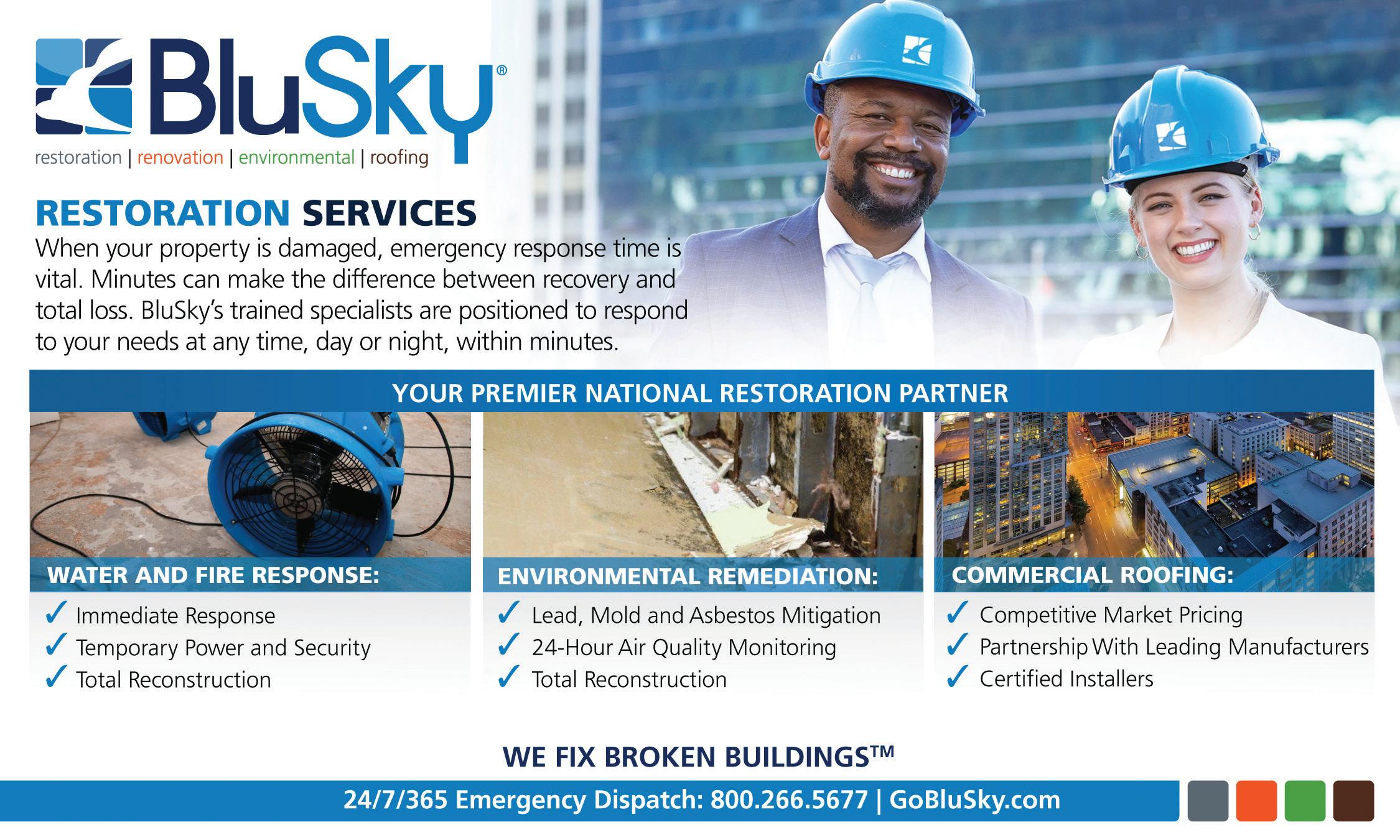
w Require that all office-to-housing projects dedicate 10 percent of the total amount of housing units created by the project to persons and families of low or moderate income.
“We have to move fast if we’re going to stop our downtowns from crossing the tipping point into urban decay,” said Haney. “Unfortunately, history shows that if we leave it up to local governments, they’ll hold hearings and pay for studies until it's too late. This bill stops the bureaucracy and will allow us to move fast to build desperately needed housing and bring life back to our downtowns.”
17 California Buildings • Spring 2023 Your commercial IPM/Green/LEED specialists Count on Crane for Pest Management Expertise Serving commercial property managers throughout the Greater Bay Area...since 1930 415-922-1666 • 510-536-1222 408-295-3333 • 800-592-7777 www.cranepestcontrol.com NPMAGreenPro Certified
n
California Moves to Increase EV Charging Stations
As California moves increasingly toward electronic vehicles, pressure will continue to mount for commercial, institutional and multifamily buildings to provide more EV charging stations. With the state government committed to phasing out gas-powered vehicles in just 12 years, the move to electric is inevitable. The state is also offering a highly stimulative energy rebate program for the purchase of EV vehicles.
Bob Raymer of California Code Consultants serves as a building code consultant to the Building Owners and Managers Association of California and provides regular updates on the new California building code, especially changes to the state’s green code. He recently warned of a “decarbonization tsunami heading toward California” that will drive green code reform. He advises building owners and managers to closely follow issues such as renewable energy fuel cells and battery technology.
Raymer told a recent BOMA codes seminar that mandates for new facilities require that 25% of space facilities be “EV capable” with conduit and panel that will eventually draw 240-volt capacity. Already, San Francisco requires that garages with 100 or more spaces install EV chargers in 10% of them this year.
California state energy officials in a recent statement said, “Electric vehicles play an important role in California’s efforts to reach its ambitious climate and air quality goals. These vehicles, which produce zero tailpipe emissions, also play a critical role in reaching the state’s goal of getting 1.5 million zero-emission vehicles on California roads by 2025.
“Through the Clean Transportation Program, formerly known as the Alternative and Renewable Fuel and Vehicle Technology Program, the California Energy Commission is investing in the charging infrastructure and technologies that are helping to drive the transition to clean, zeroemission electric vehicles throughout the state. The Energy Commission is also supporting strategic regional planning
to support adoption of these vehicles.
The California Energy Commission is building a corridor of connecting, conveniently-located direct current fast chargers that allows drivers of electric vehicles the freedom to travel throughout the state.

“This is the largest network of publicly accessible charging stations in the United States. This network allows for the rapid charging of battery electric vehicles through out every major highway and thoroughfare in the Golden State. Targeting transportation corridors allows drivers of electric vehicles to travel throughout California and conveniently charge their cars in the least amount of time possible,” the report says.
In spite of some complaints that the EV systems isn’t extensive enough to meet debate, the network is quite impressive. The state energy commission says there are almost 24,000 charging stations in Los Angeles County, nearly 16,000 in Santa Cara County, 4,500 in Orange County and nearly 1,300 in San Francisco County, just to name a few this EV-intensive state. There and almost fast chargers 1,600 in Los Angeles County, 674 in Santa Clara County, 666 in Orange County, 534 in San Diego County and thousands more current or planned throughout the state.
Public charger counts are obtained from the AFDC Station Locator managed by the National Renewable Energy Laboratory (NREL). State law requires station operators or developers to report data on publicly available chargers to NREL. The AFDC Station Locator has been transitioning its counting methodology since 2019. The AFDC Station Locator now counts the number of ports available to charge a vehicle rather than the number of connectors as previously counted. This results in a lower count of chargers. In addition, a phase-out of the 3G cellular network in Quarter 1, 2022 has resulted in certain chargers being removed from the AFDC. These changes are expected to smooth out over time.
Photo: Adobe Stock
18 California Buildings • Spring 2023 Industry News
Mandates for new facilities require that 25% of spaces be EV capable.
April 11-13, 2023

San Francisco, CA, USA
Hilton San Francisco Union Square
Leading From the Front: The FM Impact
Leading from the front is about being active and engaged at all levels. It’s about taking the initiative on opportunities that are best for your organization, creating environments and experiences that reflect your unique culture and goals for the future.
Power Speakers
IFMA’s Facility Fusion® Conference & Expo will help you:

Build on personal and organizational strengths
Identify beneficial areas for improvement
Clear hurdles preventing progress
Become a more visible, inspiring leader
Set the example for others to follow
Position yourself and your organization for growth
Get inspired by powerful insights from top industry thought leaders




 Scott Lesnick
Scott Lesnick
facilityfusion.ifma.org
People, Facilities, Resilience: Engage the Never Give Up Mindset
Chester Santos Jon Kjær Nielsen
Economic Impact on Facility Management: High Costs and Tight Labor

Facility managers continue to face high costs, “but stability in coming,” says ABM Industries in a recent report. “The good news is that stabilization is in sight. The Consumer Price Index (CPI) is expected to rise by 2.4% this year, which is much lower than 2021 and 2022. Prices are expected to gradually normalize, especially towards the end of the year,” says ABM.
The labor market will continue to be tight, according to the report, with 3.4% unemployment and 3.4 wage growth. “There still aren’t enough people in the labor market. And with low unemployment and high wage growth, it’s going to be as difficult as ever to attract and retain facility maintenance personnel,” the report explains.
ABM advises, “Facility managers will need to watch economic trends closely and be prepared to respond with agility. Some of the best measures you can take include:
w Change your approach to maintenance from reactive to predictive.
w Leverage technology to drive efficiencies and assess the effectiveness of cost-saving measures.
w Stay focused on sustainability to operate a competitive facility and prepare for regulatory changes.”
IFMA Study Predicts New Realities
An International Facility Management Association report entitled “IFMA Experts Assessment,” says, “The shock waves from the COVID-19 pandemic, ensuing supply chain disruptions, and ongoing global energy and food price crises continue to impact lives and organizations’ operations. Facility managers must consolidate operations into more experiential spaces, requiring new mindsets, business models and technologies. Facility managers face several new realities, which include the following:
w Remote and hybrid work have become the norm in most offices.
w Most knowledge workers no longer need to come to the office to be innovative, collaborative or productive.
w Organizations struggle to entice workers back to office environments.
w Some organizations and managers remain wedded to traditional work practices that require in-office work.
w FM and other support functions are still assessing and coming to terms with the long-term implications of the COVID-19 pandemic. According to insights from the subject matter expert (SME) panel, the following are the key messages from IFMA’s Experts’ Assessment: The Workplace Post-COVID-19 study. SMEs:
w Expect significant space reductions.
w 59% expect organizations to reduce their overall real estate footprints, leverage more flexible spaces with shorter leases, and use coworking locations more.
w 69% opine that organizations will accelerate using these strategies in case of a recession to consolidate footprints and cut costs.
w SMEs expect that workers will likewise want to make greater use of remote work to help mitigate the effects of cost increases during the recession.
w Anticipate demand will continue to shift toward flexibility and quality.
w The aforementioned expectations for greater space reductions, a shift toward shorter leases and increased use of coworking will impact office real-estate demand in metro areas. SMEs anticipate demand for offices to decline in major metro areas in favor of midsized cities, where demand would be higher. SMEs do not expect a significant change in smaller metro and rural areas.
w Demand will continue to shift from Class C and B building categories toward coworking and Class A locations.
w SMEs expect the allocation of square feet/meter per employee on site to increase, the overall office size to shrink and the space allocated to amenities to shift. These shifts could mean that there would be an increase in the square feet/meters per work point but an overall decrease
20 California Buildings • Spring 2023 Industry News
(Continued on the next page) Image: Adobe Stock
Industrial Construction Costs Ease But Remain Elevated
Cushman & Wakefield has launched its North American Industrial Costs Guide, showing that pandemic-related supply chain constraints, which helped drive commodities costs up, continue to have a lingering impact on overall costs and material lead times for construction of new industrial buildings. A significantly higher interest rate environment in the United States and Canada has also provided additional upward pressure to costs.

“Construction activity in the industrial sector has raced to keep up with robust demand of the last two years in North American markets. While industrial construction pipelines continue at historically high levels, the sector is facing several headwinds,” said Brian Ungles, President, Project & Development Services at Cushman & Wakefield. “The demand for industrial space — largely fueled by the e-commerce sector, has led to historic levels of construction, and competition for materials and labor. This along with widespread inflation, has driven construction costs higher.”
Surveyed by Cushman & Wakefield, Construction contractors expect increased challenges in project execution timelines and material lead times. The vast majority (85%) expect slight (66%) to significant (19%) increases in material lead times. This is marginally more optimistic than sentiment from a year ago when 88% of GCs
Facility Management (Continued from page 20)
in the number of dedicated workspaces, while the spaces devoted to communal areas and amenities would increase. The ratios of private-to-public space will shift in the public’s favor.
w SMEs recommend developing new industry metrics and benchmarks for understanding how organizations plan and measure space.
Expect More Digital Twins and Virtual Office Environments
w The rapid inclusion of IoT devices in the built environment will enable digital twins. Debate raged about whether most buildings would have a digital twin by 2030. While
expected material lead times to increase slightly (36%) to significantly (52%). While the industry may see material lead times easing, significant issues remain with electrical gear and regionally with core materials, such as cement and sand.
The priciest markets are located in the Western U.S. and Canada. Of the top six most expensive markets, four are located on the West Coast and two are located in Canada. The most expensive market is Portland, where costs for medium buildouts average $105 psf and large buildouts average $98 psf.
The industrial sector has been among the winners in the wake of the pandemic. Skyrocketing e-commerce demand — along with focus on improved supply chains and increased interest in manufacturing onshore — has driven North American industrial demand over the past three years. In the U.S. alone, over 1.3 billion square feet (bsf) was absorbed between 2020 and the end of 2022.
40% believed buildings would have a digital twin, the majority did not.
w Virtual office environments will continue to grow in importance, though many do not think that cartoon-like avatars would be the preferred choice.
Resist Employee Monitoring
w Employee monitoring is on the rise. Yet, SMEs resist the use of digital employee monitoring, noting that for knowledge work, measuring by results and trust are more effective means for increasing productivity.
w 60% expect governments will enact more limits on workplace monitoring.”
n
21 California Buildings • Spring 2023
on-site private members club CORE, hospitality-grade amenities and service elevate the offering. Further incentivizing the return to the office, retail is carefully curated, and two floors in the middle of the tower are dedicated to wellness, a lounge and conferencing facilities — all with panoramic city views. Additionally, the top floor below the spire culminates these amenities with an enchanting private bar and lounge.
The Redwood Park, which consists of nearly 50 mature redwood trees transplanted from the Santa Cruz Valley to the site in 1974 and now over 100 feet tall, is also upgraded and additional landscape activates the site perimeter. Adding seasonal color to the space, Mark Twain Street — the alleyway from Sansome Street — is lined with plum blossom trees, leading up to the base of the pyramid featuring curated cafes, shops and restaurants.
New Projects
San Francisco's Iconic Transamerica Site
Dramatically Expanded
The redevelopment of the iconic Transamerica Pyramid Center gives a new lease on life to one of the most recognizable landmarks and the second tallest building in San Francisco. The project also expands and upgrades the adjacent Three Transamerica (545 Sansome) to a contemporary high-design office building, says its global architectural and engineering team Foster + Partners
The Transamerica Pyramid Center encompasses an entire block in The City’s Financial District. The Transamerica Pyramid, designed by celebrated futurist architect William Pereira and completed in 1972, is emblematic of the skyline. The broader site consists of two additional buildings — Two Transamerica (505 Sansome Street) and Three Transamerica (545 Sansome Street) — and the famed central Redwood Park.
The new design revitalizes and restores the historic Redwood Park, while tying all three buildings together through a series of strategic interventions at ground level, creating a vibrant new destination in the heart of San Francisco, while respecting and celebrating the unique heritage of the site.
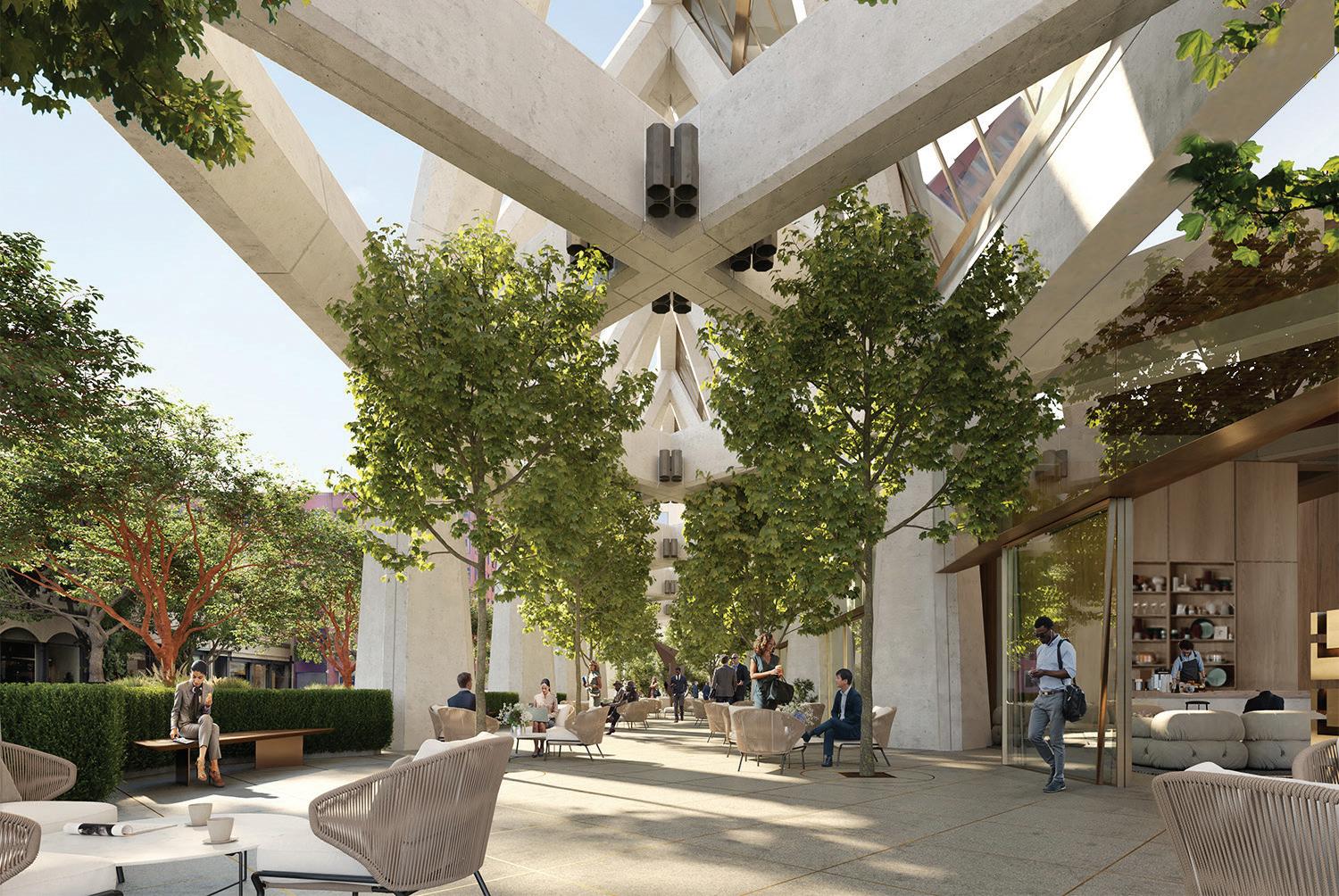

The office is reimagined as a living space, with a sophisticated emphasis placed on comfort, hospitality, and flexibility for tenants and guests. In addition to the

22 California Buildings • Spring 2023
Redwood Park. Image credit: Foster + Partners
Transamerica Pyramid – bar on top. Image credit: Boyero/Foster + Partners
Colonnade. Image credit: Foster + Partners
Los Angeles' Arts District Gets New High-Rise Office Tower

Ware Malcomb recently completed a new high-rise creative office building located at 2130 Violet Street in the Arts District of Los Angeles. The nine-story project totals more than 113,000 square feet and is situated along the Los Angeles River. It includes 109,100 square feet of office space, 3,400 square feet of ground-floor retail, four levels of parking for 275 vehicles, outdoor spaces including private terraces, and a 3,000 square foot rooftop deck/lounge with stunning views of the city and mountains. The building incorporates 27,000-square-foot open floorplates, high ceilings, and energy-efficient building systems and HVAC. The ground-up project included the reuse of an existing site, high-rise construction within small site constraints, and a focus on maximum coverage. Ware Malcomb provided architectural design services for the project; Lowe, an LA-based national real estate investor, developer and manager, developed the project; and Swinerton provided general contracting services.
“We’re excited that 2130 Violet Street is the latest addition to Los Angeles’ vibrant Arts District,” said Sergio Valentini, regional director for Ware Malcomb. “We worked closely with all project team members involved to bring to fruition
this dynamic, mixed-use property, which will transform the local office market. 2130 Violet brings a unique office experience to this part of town. The design draws from site forces to develop its forms, capitalizing on Los Angeles’s views while embracing The Arts District’s raw, industrial aesthetic.”

The design and aesthetic of 2130 Violet Street is heavily influenced by the Arts District’s industrial heritage, as evidenced by the exposed concrete and steel detailing. Recessed terraces on the office floors provide indoor-outdoor work and meeting spaces, and operable windows allow private access of fresh air. The building’s retail fronts of steel and glass protrude along Violet Street to welcome pedestrians and permit the building to become part of the urban fabric for both office workers and the general public. On the street level, a “green alley” with pervious pavement technologies, addresses sustainably stormwater and landscaping, and public sidewalks make the property a walkable environment.
(Continued on page 24)
23 California Buildings • Spring 2023
Top photo: rooftop deck/lounge at 2130 Violet Street. Lower photo: building exterior. Photo credit: Benny Chan Fotoworks.
New Projects
New Projects (Continued from page 23)
Claremont’s The Webb Schools Center
Page & Turnbull just completed a new project for The Webb Schools, a boarding school for grades 9 through 12 on a 150-acre campus in Claremont, Calif. The new Hooper Community Center preserves its historic architecture while “transforming the facility into a modern, inclusive hub for the school community with a bright, airy feel that maximizes the use of natural light,” according to The Webb Schools. The project is the most recent work in the 15-year collaboration between the noted architecture and preservation firm and The Webb Schools, an acclaimed secondary school founded in 1922. Originally built in 1931 as a gymnasium, the Spanish Revival style building has been reimagined by the design team led by architect John Lesak, principal-in-charge of Page & Turnbull’s Los Angeles office. The design adapts its two-level footprint by expanding and reorganizing its spaces to reflect the ways students and faculty gather and work. The space is flexible and inviting, accommodating one-on-one interactions, small-group activities, and community events.

The 6,500-square-foot redesign celebrates the original architectural elements. It includes Café 1175, clusters of gathering spaces, a welcome desk, and a large video wall for multiple gaming contests or community movie nights. The architects salvaged and reclaimed the maple gym flooring for built-in furnishings, new finishes and as flooring at different areas. “We also relocated and reused some of the non-historic art glass and designed the front of the welcome desk as an homage to the building’s roots as a basketball gym,” says Lesak.

New Apartment Facility Opens in LA County’s Duarte Station
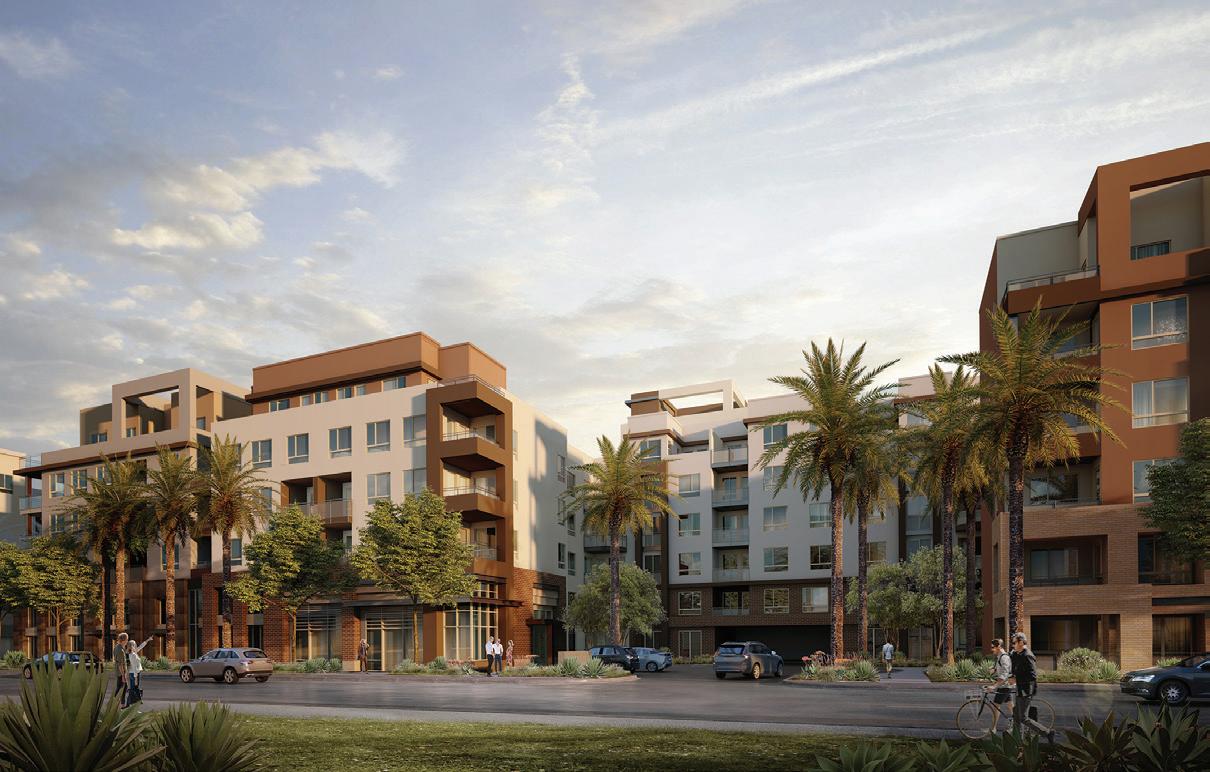
Esperanza at Duarte Station, a new Class A 344-unit, five-story apartment community located in the Los Angeles County submarket of Duarte, recently began leasing. A project of MBK Rental Living, the studio, one-, two-, and three-bedroom apartment homes are 11 miles from downtown Pasadena and 22 miles from downtown Los Angeles along the vibrant Interstate I-210 corridor. Located on 4.3 acres at the intersection of Fasana Road and Highland Avenue, Esperanza is adjacent to the Duarte/City of Hope Metro Gold Line Station and offers residents luxury living with 12 floor plans ranging from 514 to 1,090 square feet, as well as a seven-anda-half story parking structure.
“As our growth continues throughout California, we are excited to extend our presence once more in Los Angeles County in the area of Duarte where MBK Rental Living will offer high-quality, luxury flats with expansive amenities that were designed for how our residents live,” said Ken McCarren, President of MBK Rental Living. Residents can enjoy unique rooftop amenities with dramatic views of the San Gabriel mountains, including a resort-style pool and spa; an indoor/outdoor casita with a living room lounge, fireplace, open dining room, and entertainers-style kitchen; a landscaped roof deck with poolside cabanas, outdoor TVs with entertainers’ bar, grilling stations, fire pit and lounge area; and a rooftop gimnasio with free weights, cardio and HIIT zones, and outdoor yoga.
24 California Buildings • Spring 2023
Photos by Eric Staudenmeier. Courtesy of Page & Turnbull.
Photo courtesy of MBK Rental Living.
Survey Finds Americans Rely on Handwashing for Health & Wellbeing Travel and Special Occasions Increase Hand Hygiene
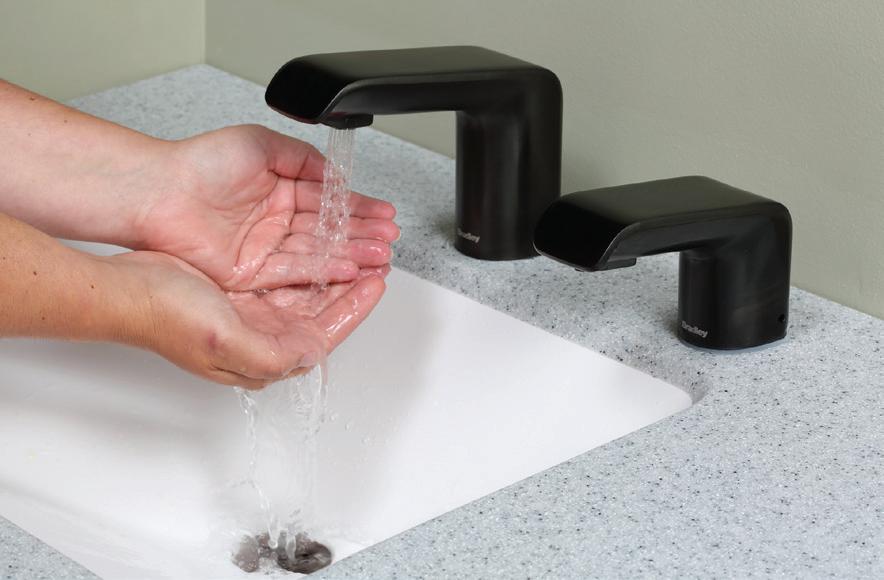
While Americans don’t agree on much these days, the overwhelming majority do agree that handwashing is important. According to the Healthy Handwashing Survey™ from Bradley Corporation, 93% of adults believe handwashing is essential to maintaining their overall health — a sentiment that’s nearly universal across gender, age and geography. The survey also found that many Americans turn to handwashing to stay healthy before a trip, while they are traveling and before special occasions.
During road trips, 75% of adults make a conscious effort to wash their hands wherever they stop along the way. 69% are diligent about sudsing up when at an airport and 63% do the same as a special occasion or the holidays approach.
“Handwashing, using soap and warm water, is an easy and effective way to reduce the spread of disease-causing organisms,” says medical microbiologist Michael P. McCann, Ph.D., professor and chair of biology, Saint Joseph's University. “Given the ease with which some of these organisms can be spread on solid surfaces, in food, and by other means, handwashing is something that everyone should do after activities like using the restroom."
In addition to the physical benefits, there are emotional upsides. Almost 70% say they feel healthier or safer immediately after washing their hands. (See box below: Handwashing Personas.)
Negative Impressions
There are definitely drawbacks to the “Skip It All” approach. The survey found that 65% of Americans have a particularly negative impression when they see someone
Handwashing Personas
who doesn’t wash their hands after using a restroom. 40% say someone who frequently touches their nose, mouth or eyes is also a turn off. For businesses, poor restroom maintenance makes more than just a negative impression; an unclean or unpleasant restroom can be a sales inhibitor. 52% say an unkempt restroom impacts whether or not they’ll return to the establishment again.
On the flip side, nearly 60% say they are likely to spend more at a business that has clean, well-maintained restrooms and the same percent will make a point of stopping at a location that offers pleasant facilities.
Germ Avoidance Techniques
In public restrooms, Americans are keenly aware of coming into contact with germs and take a variety of evasive measures.
62% use a paper towel to avoid touching toilet flushers and faucet and door handles. 43% operate the flusher with their foot, especially women. 31% hover over the toilet seat and 27% open and close doors with their behind to eliminate contact.
With so much effort going into evading germs, it’s no wonder that 82% of adults believe it is important to have touchless fixtures in a public restroom.
“Germ avoidance and handwashing diligence are two habits that should always be a priority, and businesses can support hand hygiene by providing well-maintained restrooms,” says Jon Dommisse, vice president of marketing and corporate communication for Bradley Corp. “No matter where you are or what you’re doing, everyone should lather up, scrub thoroughly, rinse and dry their hands.”
To get a better understanding of Americans’ handwashing routines, the Healthy Handwashing Survey asked respondents to identify their typical behavior.
u 51% categorize themselves as “Rule Followers.” They apply soap, lather it up, scrub completely, rinse and then dry.
u 35% put themselves in the “Lather and Linger” group, meaning they do a very thorough job of lathering and washing.
u 33% relate to “Twice as Good,” saying they always use two pumps of soap.
u 20% utilize the “Human Dryer” method of wiping their hands on their clothing after washing and 17% selected “Air It Out,” admitting they wash but rely on air drying. Finally, two categories made the bottom of the list. 14% self-identified as “Rinse and Run,” using just water but forgoing soap and drying and 3% put themselves in the “Skip It All” camp due to not having time to wash their hands.
The annual Healthy Handwashing Survey from Bradley Corp. queried 1,025 American adults Jan. 4-10, 2023, about their handwashing habits, concerns about the coronavirus and flu and their use of public restrooms. Participants were from around the country and were fairly evenly split between men (45%) and women (55%). Photo courtesy of Bradley Corporation.
25 California Buildings • Spring 2023
Thousands of California Buildings Need Earthquake Upgrades
 By John D. Lesak
By John D. Lesak
Recent construction projects focused on seismic performance improvements are making headlines. Many of them are for buildings generally considered recent, such as modernist architectural works from the middle of the last century — the 1960s and 1970s, for example, which produced many beautiful buildings with structures made of reinforced concrete. Many of them perform poorly, however, with brittleness in their columns and joints.
Called “non-ductile reinforced concrete,” these structures face requirements for professional review and possible minimum retrofitting within a specific, mandated timeframe. These rules are on the books in Los Angeles as well as surrounding jurisdictions including Long Beach, Santa Monica and West Hollywood. They are valuable, too, reflecting critical safety concerns learned from hard lessons after the 1989 Loma Prieta and 1994 Northridge earthquakes.
Other municipalities are requiring reviews and retrofits of low-rise, wood frame buildings with open, poorly braced ground floors designed to accommodate parking, retail storefronts, or retracting overhead doors. In San Francisco and San Jose, and in surrounding cities from Alameda to Richmond, seismic ordinances are swiftly addressing these “soft story” structures. Expect more mandates, too. New ordinances have been enacted outside of California in far-flung states or localities from Oregon to South Carolina to New York.
For the buildings with non-ductile concrete, new California rules include the Non-ductile Concrete Retrofit Program in Los Angeles. Property owners have three years to respond with a checklist showing whether they have a non-ductile concrete building, and 10 years to “submit proof of previous retrofit, or plans to retrofit or plans to
(Continued on the next page)
26 California Buildings • Spring 2023
Shown above: Originally designed by notable architect Paul Williams, UCLA’s Pritzker Hall (formerly Franz Hall Tower) uses diagonal dampers placed at the corners of the building’s ground floor “soft” story to help dissipate lateral forces. The concrete beams and columns that form the retrofit openings are lined with steel channels to further reinforce the structure. The structural insertion has minimal effect on the building’s architectural character. Photo by Kim Rodgers courtesy CO Architects.
demolish building.” The construction itself could run up to 25 years — not exactly a fire drill.
Construction teams and their clients are learning a lot from these projects. Most important is the lesson that it’s better to undertake a voluntary seismic retrofit, as soon as possible, rather than awaiting a mandatory cure from authorities having jurisdiction.

Put another way: It’s better to act now, and act fast, than to wait for building officials to show up at your door.

In fact, savvy building owners are racing to upgrade and preserve some of the country’s most iconic modernist buildings by bracing them with inconspicuous, thoughtfully designed seismic strengthening. Many of these concrete buildings were completed prior to the mid-1970s, and their beams and columns are inadequate to ensure public safety during and after tremors. These include historically important midcentury buildings of considerable size in city centers and on college campuses.
Examples include two UCLA buildings, the 1929 Powell Library and the recently renovated Pritzker Hall, where clever and unobtrusive retrofits help stabilize and preserve these iconic buildings. The latter modernist structure, completed in 1967 and designed by celebrated architect Paul Revere Williams, achieves the seismic performance required by the University of California system by adding viscous dampers in key locations. Conceived by KPFF with the lead architect CO Architects — Page & Turnbull served as preservation architect — the project cleverly reduces seismic demand by means of a phased and unobtrusive approach.
Construction crews on an iconic, 13-story midcentury landmark in Hollywood, which opened in 1956, have taken advantage of reduced occupancy during the Covid pandemic to jump-start their successful seismic retrofit. Sometimes a seismic retrofit is not needed, depending on the specific architectural solution and building use. For example, in Riverside, Calif., Page & Turnbull created a new second-floor opening in a decommissioned 1964 library to create The Cheech Marin Center for Chicano Art & Culture. The second-floor slab opening is sized specifically to create a dynamic public space while maintaining the building’s structural performance.
As we proceed, we’re learning more about seismic retrofits for modern concrete structures. The Non-Ductile Reinforced Concrete Ordinance in Los Angeles, passed in October 2015, has been written so that building owners are allowed to avoid other code-mandated upgrades to prioritize public safety through seismic performance.
Project teams are finding that the seismic retrofits can be highly intrusive, however, affecting many other building systems including electrical and plumbing, for example. In the end, work scopes are growing to address more needed improvements simultaneously.
Seismic upgrades are essential, no doubt. And this is one of the rare cases where the government is asking building owners to bring their properties in line with codes written long after these structures were originally approved. Moving quickly to get an engineering study and to plot out a long-term approach for a smart retrofit is more important than ever.
For those who are wondering, there are lots of non-ductile concrete out there in our existing building stock. Anything built through 1979 should be reviewed for potential inadequacies. In the end, the goal of the construction community is collapse-prevention during future tremors. In many buildings, the reinforced concrete may be beautifully designed and historic, but it simply isn’t adequate to resist catastrophic failure. n
27 California Buildings • Spring 2023
Early Bird and Group Discount rates still available Register today! THE LANDSCAPE
Adapt, evolve and grow to be at the cutting edge of commercial real estate Register today at www.BOMAConference.org
HAS CHANGED
Lesak is Principal and Vice President of Page & Turnbull, Los Angeles.
Reliable Controls rigorously engineers its products to minimize their impact on the environment and provide years of dependable, high-performance service. The new RC-FLEXair® is manufactured in an ISO 9001–and 14001–certified facility and features an industryrecognized 5-year warranty.

Made from highly recyclable materials, it also complies with RoHS 3, WEEE, and R2 directives to ensure easy, clean disposal at the end of its useful life. Learn more today at reliablecontrols.com/RCFA
Brio Air Purifier from Agentis Air

The Brio air purifier, from Agentis Air, closes the gap between HVAC systems and healthy indoor air. Brio uses patented technology developed at the University of Washington for in-room air cleaning with no airflow dropoff, near-zero maintenance, and a low cost to own.
Brio does what HEPA can't — removing ultrafine particles (>10nm) without filter clogging, and without an energy penalty. Our advanced design includes a disposable filter and Brio is CARB certified. Find out more at brioairpurifier.com/CA
Sustainable Hardware 28 California Buildings • Spring 2023
PRODUCT FOCUS
Enjoy the look of beautiful natural wood with the durability of metal. PAC-CLAD PVDF wood grain finishes are available on all PAC-CLAD wall panel systems. Offered in 16 finish options, these unique finishes appear nearly indistinguishable from natural wood, offering architects and designers ultimate creative flexibility.
For more information and to see examples of these unique finishes, visit PAC-CLAD.com/wood-grain.

Mobile Storage Solutions
Kings III's Emergency Monitoring Reduces Risk and Mitigates Liability Exposure

Elevator malfunctions are inevitable. Entrapments coupled with health emergencies and a wide spectrum of passenger reactions can quickly become an ongoing headache. Kings III helps you reduce risk and mitigate liability exposure via its class leading emergency monitoring for help phones in elevators, stairwells, parking structures and more. Its concierge level service helps you manage tenant experience, while also reducing your risk and liability with value-added benefits not common in the monitoring space.
For more information, visit www.kingsiii.com.
Every project has its own unique challenges, and keeping tools and equipment organized is just one of the many important aspects of a well-managed job site. National Construction Rentals offers mobile storage containers in many sizes, so additional room is never an issue. Whether it’s 10, 20 or 40 feet in length, every unit offers the maximum in usable space.
For additional information, call 800-352-5675 or visit www.rentnational.com today.

29
PAC-CLAD | Petersen NEW Wood Grain Finishes
California Buildings • Spring 2023
Healthier
Workplace Air (Continued from page 7)
contaminants such as VOCs and viruses that originate from inside the building.

“Improving indoor air quality does not have to be a huge capital expense nor does it require significant construction activities that could disrupt the occupants. The first step should be regularly replacing filters and ensuring the facility’s minimum ventilation rates are established and functioning. Once the system is fundamentally functioning properly, then it is time to engage a competent mechanical contractor to discuss more advanced IAQ improvement options tailored to the unique building, occupancy, and goals such as higher performance/efficiency filtration and other mechanical system changes.”
UVC Sterilization Is a Proven Technology
Advanced IAQ systems, Blake says, include UV sterilization, needlepoint bipolar ionization (a somewhat controversial method), high performance MERV13+ filtration (either commercial grade portable or centralized with necessary fan system upgrades), 100% outside, air duct and mechanical equipment cleaning, facility automation upgrades to monitor and control IAQ such as CO2 sensors and VOC sensors and humidity control (dehumidification and/or humidification).
“There are a couple different systems that people can use. UVC is a proven technology that kills organic material on surfaces without adding contaminants. We have used them to treat coils for a very long time. There are some best practices to be followed as UVC can be destructive to plastic and wiring but you just need to follow proper protocols and best practices.
“There are surface UV cleaning systems where the UV emitters are locked in the occupied space and they active at night to kill surface contaminants or just the space air (you see these in fast food restaurants sometimes). There are UV systems that are designed for mounting in HVAC equipment that is designed to kill any surface growth on the coils and surrounding areas. Other systems designed to be mounted in the HVAC ductwork that is intended to kill (“inactivate”) living things in the air stream such as viruses, bacteria and mold,“ Blake concludes.
Danny Murtagh, a BXP vice president for engineering in San Francisco, says that as COVID began, “Many meetings were spent on technologies and techniques to better manage healthy air against a COVID virus. From the CDC to ASHRAE to state, county and city agencies, rules were made to attempt to create safety and enhance the environment against the spread of the virus.
“We soon learned about HVAC disinfecting technologies like UV, UV-C and ionization and hybrid systems that possibly could be adapted to the existing building systems. While investigation of these technologies continues, certain things did rise to the surface as prudent practices to implement. Good preventive maintenance, sanitizing systems, increasing filter efficacy, increasing filter resistance to the tune of MERV 13* to 15* where systems can tolerate it and still deliver the required CFMs of air. Also increasing filter replacement frequencies to assure they maintain the CFM capacity to serve the system. Cleaning coils has been a topic to assure good cleanliness maintenance.
“During the heart of COVID, recommendations were made for getting vaccinations and boosters to build a resistance to the virus as it morphed to other strains. Cleaning and sanitizing communal areas and equipment was undertaken as a good practice. Portable HEPA filter fan units in communal settings or at building lobbies was recommended to filter out the virus and other particulates as well to limit the impact of spreading the virus.”
Murtagh continued, “Much like personal hygiene, good maintenance practices are always in vogue and should be the norm as we go forward. Although the codification of these lessons may not materialize, certainly ASHRAE will continue to review and adopt higher standards going forward.”
Outside Air Dilutes Contaminants
“Something that could help in California is exploiting the use of outside or fresh air to dilute the contaminants in the air. It was once upon a time the end all be all for HVAC design, but lately other methodologies have taken a front row seat in design,” Murtagh adds.
30
•
California Buildings
Spring 2023
(Continued on the next page) Image:
Stock
UV-C is a proven technology that kills organic material on surfaces without adding contaminants.
Adobe
Better Air Innovations (Continued from page 9)
integrates with Taco’s exclusive indoor HydroBox to provide a complete system with just 6 pipe connections needed. System M is a radically innovative air-to-water heat pump system that provides comfortable, efficient heating, cooling, and plenty of domestic hot water. A true plug-n-play appliance, its packaged design makes installation less intrusive; no refrigerant or gas lines are needed. System M seamlessly integrates with almost any high-efficiency heating and cooling system and is perfect for both new construction and existing HVAC systems. The installation time is half of a typical air-to-water heat pump by eliminating the work to design, procurement, and installation of all the required hydronic components. Just 6 connections needed; 2 connections to the heat pump, 2 connections to the domestic hot water tank (DHW) and 2 connections to the heat and cooling system.
Finalists in this category include Mitsubishi Electric Trane HVAC US, and Trane
Ventilation
Winner: SmartD Technologies
Innovation: SmartD Clean Power VFD

SmartD's Clean Power Variable Frequency Drive changes the motor control landscape. By delivering a clean, sinusoidal signal it reduces motor system losses by up to 40% and extends motor lifetime in a compact footprint that can be deployed without ancillary filters.
The SmartD VFD integrates wide-bandgap (WBG) semiconductors into its multi-level inverter architecture and combines them with patented modulation algorithms to produce a pure-sine wave electrical signal without the need for external filters.
WBG semiconductors have intrinsic characteristics that make them more efficient: on-state losses are 10-80% lower and switching losses are 9 to 30 times lower than standard IGBTs. While the benefits of WBG are clear, they are but a piece of the SmartD innovation equation. By combining a single-carrier harmonics-canceling modulation, with a multi-level architecture and the high frequency switching of the WBG transistors, SmartD is able to integrate filters 400 (four hundred!) times smaller than auxiliary filters normally required to achieve a comparable signal quality. The integrated miniature-filters not only reduce the overall footprint and simplify wiring, they also reduce filter losses while improving motor efficiency, resulting in an overall system efficiency improvement and system-loss reduction of up to 40%.
Finalists in this category include ECM PCB Stator Technology, and Lennox International, Inc.
The AHR Expo is the essential event for HVACR professionals, attracting the most comprehensive gathering of the industry from around the globe each year. The show provides a unique forum where manufacturers and suppliers of all sizes and specialties come together to share ideas and showcase the future of HVACR technology. Product photos courtesy of their companies.
Healthier Workplace Air (Continued from page 30)
“Ventilation of HVAC like DOAS, VRF, VRV and other design technologies have been applied leaving outside air as a prorate element in the selection process. 100% full OSA economizer systems can be the norm, depending on climate geographies/diversities. It may not always be the most energy efficient approach, but it will always be the more defendable approach in climates that are milder to moderate like the San Francisco Bay Area it usually is the more energy efficient approach/design.
“Depending on where you are in the world,” says Murtagh, “outside air (OSA) is a great HVAC tool to flush out building contaminants either during or after hours and will go a long way to minimizing the spread of things like a COVID virus. When you consider OSA, you also have to consider the median climate not only temperature but humidity as well. If you bring in 100% OSA in a climate subject to high temperatures and high humidity, you may fail, as it is not practical to design an HVAC system for this purpose in climates with extreme temperatures and humidity.” n
31 California Buildings • Spring 2023
California Buildings
PO Box 225234
San Francisco, CA 94122
www.cabuildingsnews.com
SOUTHERN CALIFORNIA
APRIL 5-6, 2023
ANAHEIM, CA
NORTHWEST
MAY 10-11, 2023
PORTLAND, OR
NORTHERN CALIFORNIA
SEPTEMBER 12-13, 2023
SANTA CLARA, CA
Register for FREE: facilitiesexpo.com



Printed on recycled paper. Return Service Requested


























































































 Scott Lesnick
Scott Lesnick











 By John D. Lesak
By John D. Lesak























